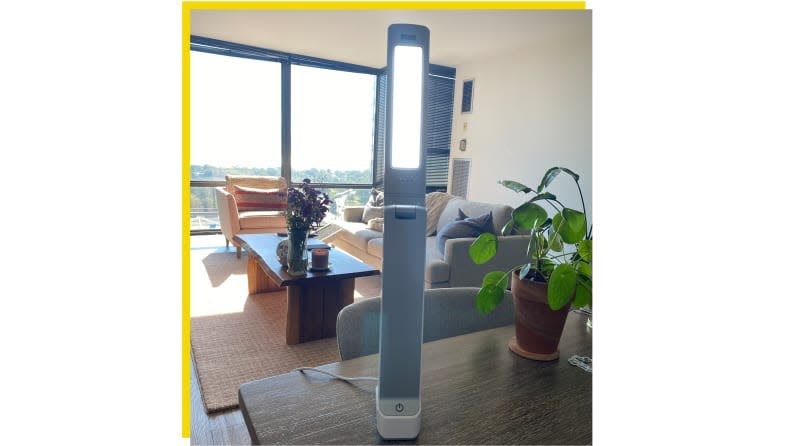Feeling sad as winter approaches? It could be SAD. Here's how to cope
Each year when fall arrives, both the sun and my energy disappear earlier. I feel a sense of dread when I first notice darkness outside my window just as I wrap up work in the early evening.
I experience seasonal affective disorder, also known as seasonal depression or winter depression. It occurs when daylight hours diminish and people get less sunlight during cold temperatures, which has been linked to biochemical imbalances in the brain.
SAD is more common among people who live farther from Earth's equator, but mental health professionals still see it in North Jersey, said Suzanne Salamanca, the director of medical services at North Jersey Recovery Center in Fair Lawn.

These seasonal changes affect people’s internal clocks and can cause symptoms similar to general depression, such as mood changes and fatigue. The end of daylight saving time, which occurred on Sunday, may start the cycle of SAD. Certainly people will notice the earlier evening darkness.
"Bright sunshine tends to pick up everybody's mood, so when you have less hours of sunlight and it gets darker early, it definitely affects everybody's mood," said Debra Wentz, the president and CEO of the New Jersey Association of Mental Health and Addiction Agencies. "But not everyone has SAD."
What is SAD?
When winter approaches, I feel physically drained no matter how many hours I sleep — a lot during the colder seasons — or cups of coffee I drink. Increased fatigue, loss of energy and sleeping too much are some symptoms of SAD.
Others include loss of interest in activities that used to bring joy, appetite changes, slowed movements or speech, difficulty concentrating or thinking, and having recurring thoughts of death or suicide.
"Symptoms of depression can appear gradually or come on all at once," Wentz said. "Most of the depression can be mild to moderate, but with some people they're severe. There's a lot of variation of how it manifests in people."
One key difference between SAD and major depressive disorder is that SAD symptoms typically improve once spring arrives. Though it’s not common, some people experience SAD in warmer months, but the hardest months are typically January and February. Another difference Wentz noted is that SAD may cause an "insatiable appetite for carbohydrates, which tends to result in weight gain — which can create further depression."
Who gets SAD?
About 6% of people in the U.S. suffer from symptoms of SAD during the winter months, Wentz said. Another 10% to 20% experience a very mild form of the disorder.
More: Electroconvulsive therapy, once stigmatized, is used by many in NJ to fight depression
More: Depression, anxiety, suicide: NJ hospitals confront surge in teen mental health cases
Research shows women are more likely to develop SAD than men. One’s chances of experiencing it increase if family members have dealt with it. SAD can affect people at any age, but it's not typically seen in those under 20. The main age of onset is age 18 to 30.
People with major depression or bipolar disorder may experience worse depression symptoms during the winter. North Jersey Recovery Center supports people with substance use disorders, and Salamanca said people who grapple with co-occurring disorders often require more intensive treatments.
"We are always considering the potential effects of substance cessation on mental health symptoms,” Salamanca said. “Since sleep disturbances … are a ubiquitous feature of SAD, as well as the post-withdrawal period from many substances of abuse, and highly predictive of relapse, we often target this symptom first.”
How to cope with winter blues
SAD is a manageable condition with the right treatment, Salamanca said. She and Wentz advise people to seek proper evaluation and guidance from a board-certified mental health or medical provider. SAD symptoms are similar to several other conditions, so tests would rule out other possible diagnoses.
Patients have shown improvements after undergoing light therapy or talk therapy, taking prescribed anti-depressant medications, or a combination of these treatments.

Anyone can buy light therapy tools, often called SAD lamps. These produce artificial light so people can regularly get a dose of daylight indoors and boost their mood during winter months.
Wentz suggests exposure to high-intensity artificial light for several hours at the same time each day. Eventually, people may be able to cut back to a few minutes of light exposure.
Light treatment is “relatively safe,” Salamanca said, but the Food and Drug Administration does not test or regulate light box devices.
If a person’s depression becomes severe or suicidal thoughts occur, professionals advise seeking emergency care or calling 988, the National Suicide & Crisis Lifeline.
This article originally appeared on NorthJersey.com: What is seasonal affective disorder, and how to cope

